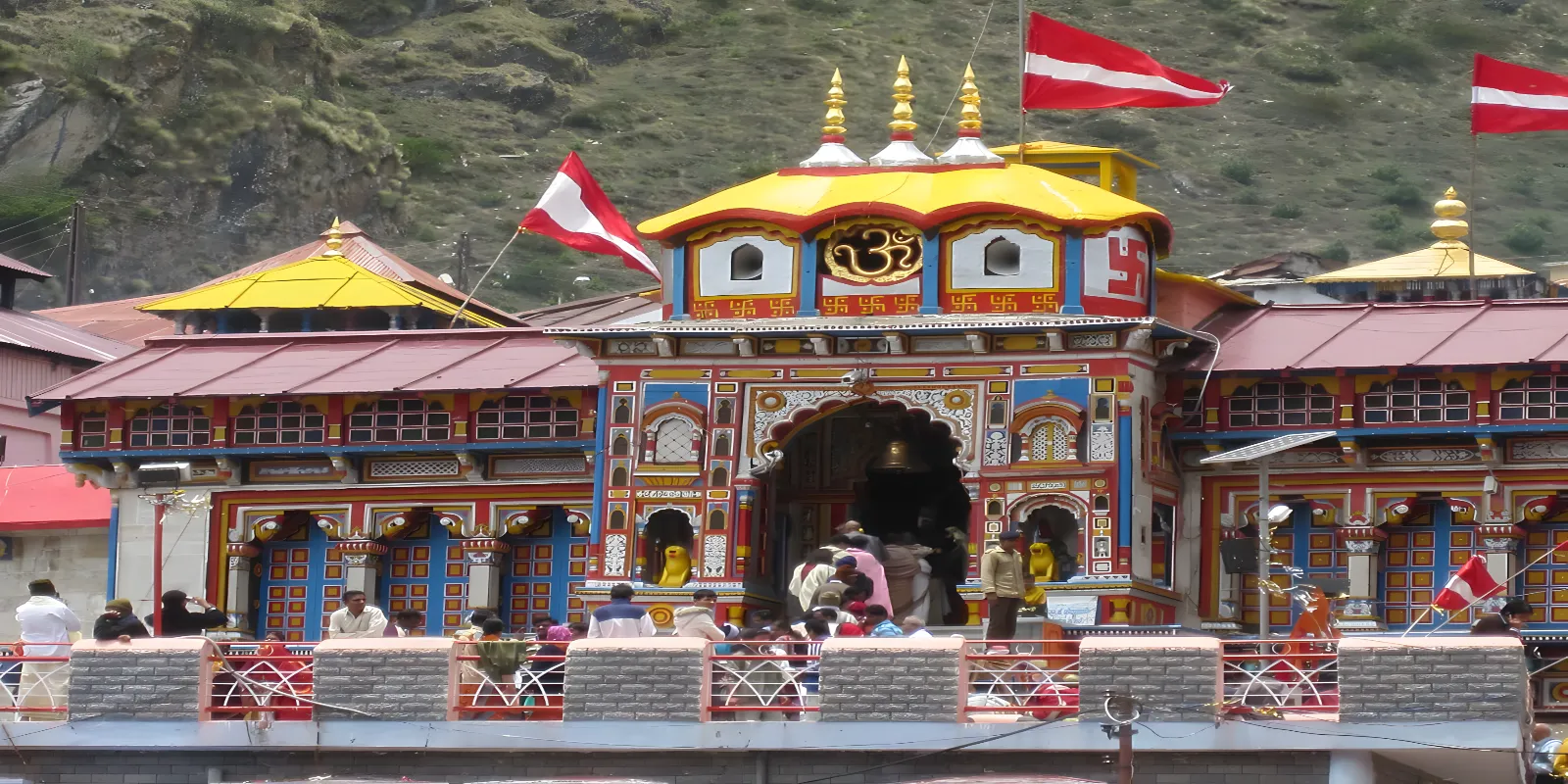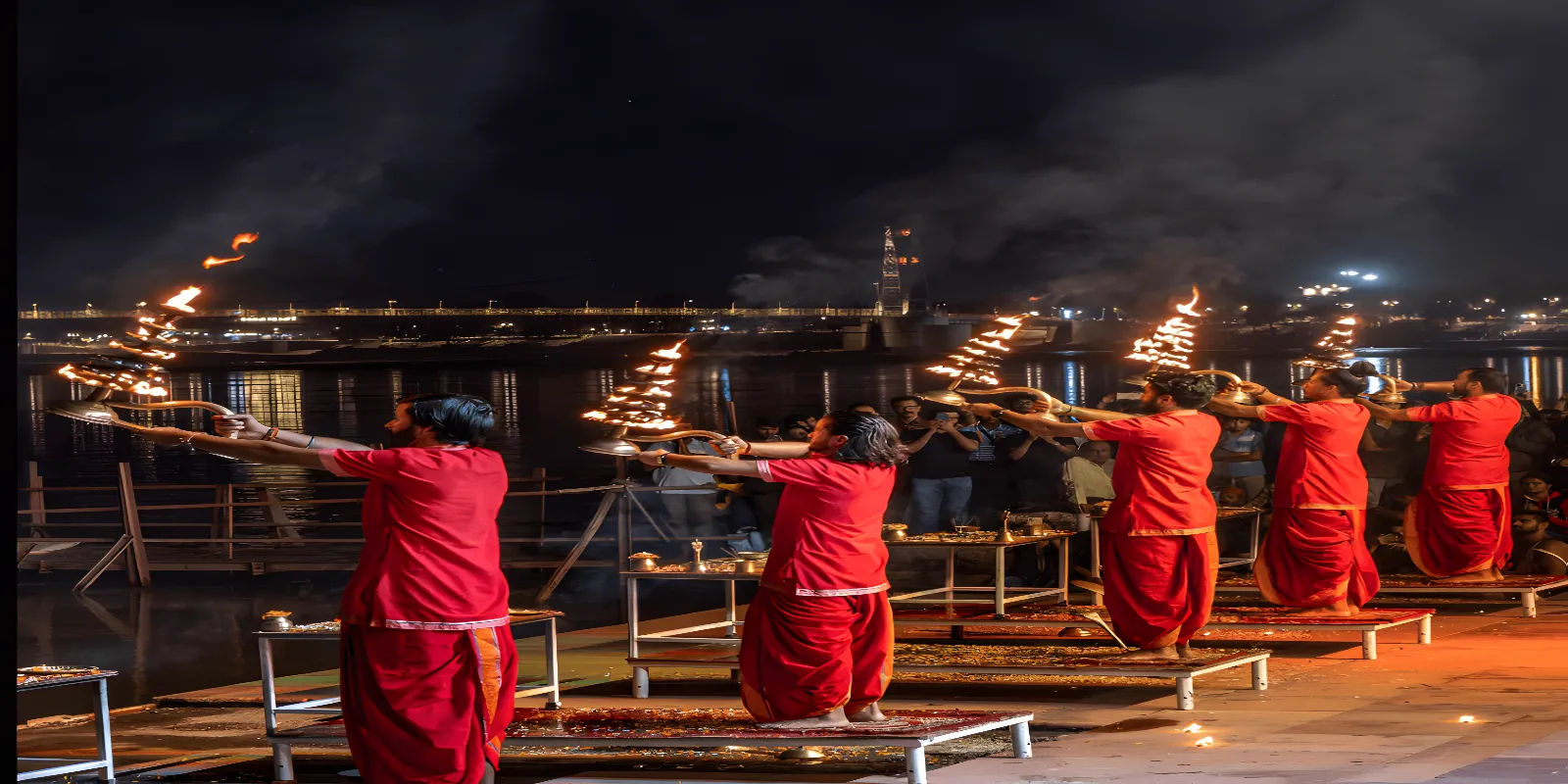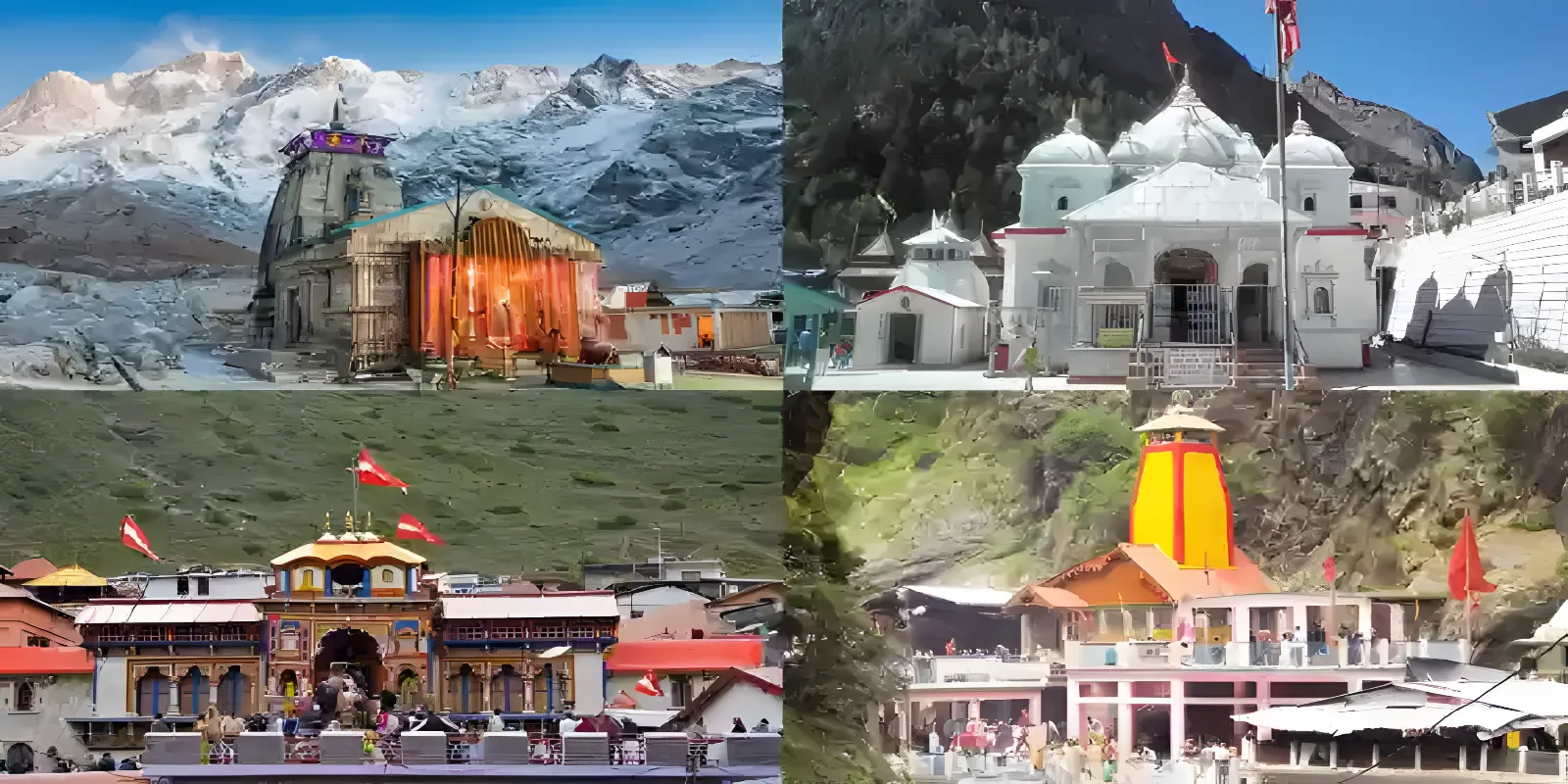We took an early morning flight from Kochi to Dehradun. The children were excited to fly and eager for the adventures ahead. From Dehradun, we hired a cab to Barkot, enjoying a scenic drive that highlighted lush landscapes and winding rivers, setting the tone for our sacred journey. Nestled by the Yamuna River, Barkot welcomed us with its peaceful vibes and stunning views all around. We spent the night at a comfortable hotel there.
Barkot – Yamunotri – Barkot
The next morning, we began our journey towards Hanuman Chatti, where there is a Hanuman temple. Legend says that Lord Hanuman rested here during his journey to Lanka to rescue Sita. From Hanuman Chatti, we proceeded to Janki Chatti, the starting point of our trek towards Yamunotri Dham, which covered approximately 6 kilometres. There are palkis and pony services for those who find it difficult to trek, with a prepaid counter available at Janki Chatti. We booked palkis for my mother and grandmother, while my kids and I rode ponies. The rate was calculated based on our weight. There is a Bhairav temple on the way to Yamunotri from Janki Chatti. When we reached Yamunotri, we felt the deeply spiritual atmosphere surrounding us. We began our rituals by purifying ourselves in the cleansing waters of Gauri Kund, followed by offering prayers at the sacred Yamunotri Temple. The presence of Divya Shila, a revered holy rock linked to Goddess Yamuna, is located outside the main shrine. Devotees worship the Shila before going to the temple. It is said that people coming for darshan must first take a dip in the Suryakund. As part of the pooja, they tie some rice and a few potatoes in a muslin cloth and dip it in the hot water spring to cook. The prasad is offered at the Divya Shila first and then taken to the temple for offering. It can be taken home as prasad. This ritual is not mandatory, but it is advised for the successful completion of the pooja. We then descended to Janki Chatti and then to Barkot for an overnight stay.
Another road goes to Kharsali from Janki Chatti. It is said that the idol of Goddess Yamuna is taken down from Yamunotri to a temple called Khushimat in Kharsali because the area gets covered in snow and can't be reached. People can visit the goddess in the Kharsali temple when the route to Yamunotri is closed due to snow. The priests of Yamunotri Temple come from this village. During Diwali, there's a festive ceremony to bring down the idol, and it returns to the temple in spring. Afterwards, we walked through the rocky paths, passing by the Shani Temple.
Barkot - Uttarkashi
The next morning, we continued our journey from Barkot and proceeded towards Uttarkashi, a town nestled along the Bhagirathi River, a tributary of the Ganga. Uttarkashi, known for its cultural heritage, serves as a gateway to the sacred Gangotri Dham. Upon arrival, Uttarkashi greeted us with the peaceful Vishwanath Temple and bustling local markets filled with handicrafts and spiritual artefacts. As evening descended, we gathered at Manikaran Ghat, overlooking the Bhagirathi River, to witness the enchanting Ganga Aarti—a deeply moving ritual that illuminated both the waters and our hearts with its divine grace. The Kashi Vishwanath Temple, near the Bhagirathi River, offers impressive views of the nearby mountains. Dedicated to Lord Shiva, it is believed that this temple was originally built by Sage Parashuram and later renovated in 1857 by Maharani Khaneti, wife of Sudarshan Shah. Belief is that, if Varanasi is submerged underwater, Lord Kashi Vishwanath will relocate to this temple in Uttarkashi. Inside the temple, visitors can find a Shivalinga standing at a height of 56 cm, slightly tilted to the south. In the inner shrine, you'll find idols of Goddess Parvati and Lord Ganesha, with Nandi residing in the outer chamber. The temple also houses images of Sakshi Gopal and Sage Markandeya in meditation. Open year-round, it provides a serene escape in the Himalayan foothills. As we journeyed towards Gangotri, we carried with us the tranquil essence of Uttarkashi, where spirituality and natural beauty blend seamlessly.
Uttarkashii - Gangotri - Uttarkashi
On our journey to Gangotri Dham, we came across Gangnani Kund, a hot spring where pilgrims relax. The hot spring is believed to have medicinal properties due to its high sulfur content. Pilgrims stop at Gangnani to take a dip before proceeding to the temple. Continuing onward, we reached the charming village of Harsil along the Bhagirathi River. We decided to visit the village and explore its beauty. Known for its snow-clad mountains and apple orchards, Harsil attracts many visitors.
Mukhawa, a nearby village in the Harsil valley, is known for its ancient temple dedicated to Goddess Ganga. We didn’t visit it because its significance is mainly during winter. During this season, the idol of Goddess Ganga is brought here from Gangotri due to harsh weather conditions. Since pilgrims cannot visit Gangotri in winter, they come to Mukhawa to pay their respects. Further along our journey is Bhairon Ghati, nearly 20 km from Harsil. From Bhairon Ghati, it was about an 8 km drive to Gangotri Dham, with the last kilometer on foot to reach the temple area. As children, we heard the tale of King Bhagirath's penance that brought the Ganges River to Earth. At Gangotri Dham, we visited the Gangotri Temple and experienced the sacredness of the Bhagirathi River amidst prayers and ancient stories. Later, we visited Surya Kund and Pandav Caves. Legend has it that the Pandavas meditated here during the Mahabharata. At Surya Kund, a sacred pool near Gangotri Dham where devotees pray to Lord Sun, we couldn’t go down due to its waterfall-like structure. We enjoyed the view of the water. At the Gangotri temple market, we bought puja items. The Bhagirathi River at Gangotri is freezing cold, so swimming is not advisable. Inside the temple, we saw where King Bhagirath meditated to bring Ganga to Earth, alongside idols of Lord Shiva, Ma Shakti, and Lord Ganesha. Following our spiritual visit to Gangotri Dham, we prepared to trek down towards Uttarkashi. We boarded a vehicle that comfortably transported us to Uttarkashi, where we stayed overnight. Exhausted from the journey, we fell asleep quickly.
Uttarkashi – Sitapur
Following our spiritual visit to Gangotri Dham, we prepared for the next leg of our journey towards Kedarnath. Since the journey from Gangotri to Kedarnath is quite long, we decided to break it up and stay the night at Sitapur. It took us nearly 7 to 8 hours to reach Sitapur from Uttarkashi, with a lunch stop along the way. We were all excited about the trek to Kedarnath the next day and had thoroughly researched all the available information online. We had pre-booked a hotel in Sitapur, and upon arrival late in the evening, we settled in quickly. After an early dinner, we retired for the night. Sitapur, however, turned out to be a bustling and crowded place, quite different from the serene environments we had experienced earlier in Uttarakhand. We stayed energized throughout the long day of travel, eagerly anticipating our upcoming trek to Kedarnath. Our spirits were high as we looked forward to the spiritual journey ahead and the adventure of trekking through the Himalayan landscapes to reach one of India's holiest shrines.
Sitapur - Kedarnath - Guptkashi
The next morning, we woke up early and made our way to Sonprayag. From Sonprayag, we needed to take the shuttle service provided by the government to reach Gaurikund. The shuttle service is convenient and costs Rs 50 per person, ensuring a smooth journey through the mountainous terrain. Sonprayag buzzed with pilgrims and travellers, all eagerly preparing for their journeys to Kedarnath. The atmosphere was charged with excitement and devotion as everyone geared up for their spiritual quests.
As we boarded the shuttle, we enthusiastically looked forward to reaching Gaurikund, the starting point of the trek to Kedarnath. The scenic drive through the picturesque landscapes of Uttarakhand increased our excitement and excitement. After taking a bath at Gaurikund and completing our biometric registration (which can also be done online), we began our trek. Passing through Jungle Chatti, we reached Bhimbali, the resting place for devotees. We then proceeded straight towards Kedarnath Yatra Dham. Besides trekking, some people who can’t walk opt for a pony or doli. We took a pony as I had aged parents and children with me. Arriving at the holy Kedarnath temple, we saw the Mandakini River flowing nearby and a massive stone named Bhim Shila on the other side. Bhim Shila saved the temple from destruction during the 2013 disaster, which is now worshipped by devotees. The backdrop of the snow-capped peaks behind the temple was a moment of awe. We attended the morning puja, feeling a profound sense of peace and devotion. The history and mythology of Kedarnath captivated the kids, and we spent time discussing the significance of the place. After offering prayers and prashad in the temple, we visited Bhairon Temple and Ram Gufa, Lord Rama undertook meditation in devotion to Lord Shiva. We also visited Shankaracharya Samadhi. We stayed overnight at Kedarnath and performed all the poojas. We then descended through the same route and reached Guptkashi.
Guptkashi - Badrinath
The final part of our Char Dham journey took us to Badrinath. The travel time from Guptkashi to Badrinath by road is typically around 7 to 8 hours, depending on road conditions, traffic, and weather. We didn’t want to travel for 8 hours straight, so we broke our journey in the middle at Joshimath. Next day morning we started our journey to Badrinath. The drive was filled with beautiful views of the Alakananda River and the nearby mountains. We were glad that we could drive up to the temple without having to hike. When we reached Badrinath, we saw the colourful and beautiful Badrinath Temple. We took a dip in the Tapt Kund, a natural hot spring near the temple, which was refreshing after the long drive. Taking part in the temple rituals and praying to Lord Vishnu was a very touching experience. The kids enjoyed the journey through the mountains and were very excited to learn about the legends of Badrinath.
Even though there was a long line at the temple, we could seek blessings. Other attractions like the Tapta Kund and the river where people perform pitru dan (ritual offerings) were worth visiting. We also saw Charan Paduka, which has Vishnu's footprints. It needs to undertake a short trek of about 1.5 kilometers to reach there. It is believed that Lord Vishnu set his foot on earth at this place. We explored Mana village, which is said to be India's first village near the Indo-Tibetan border. Many trekking routes starts from this village, including the well-known trail to Vasudhara Falls, a picturesque waterfall located approximately 6 kilometres from Mana. We listened to interesting stories about the village's past and saw paintings that showed ancient tales. We explored Ganesh Gufa and Vyas Gufa, where it is said that the Mahabharata was written. Another special place was Vasudhara Falls, about 5 km from Bhim Pul. Legend says that if you have committed a sin, the water will not fall on you.



